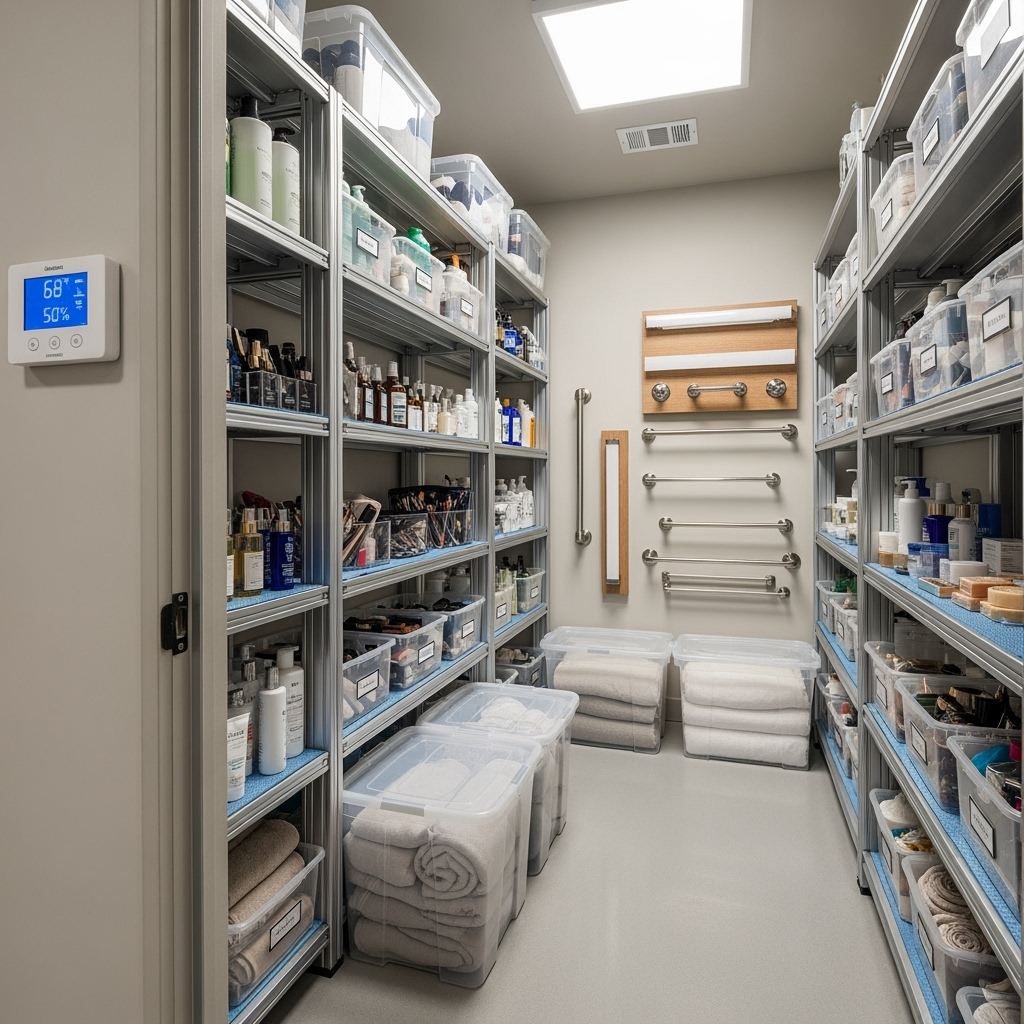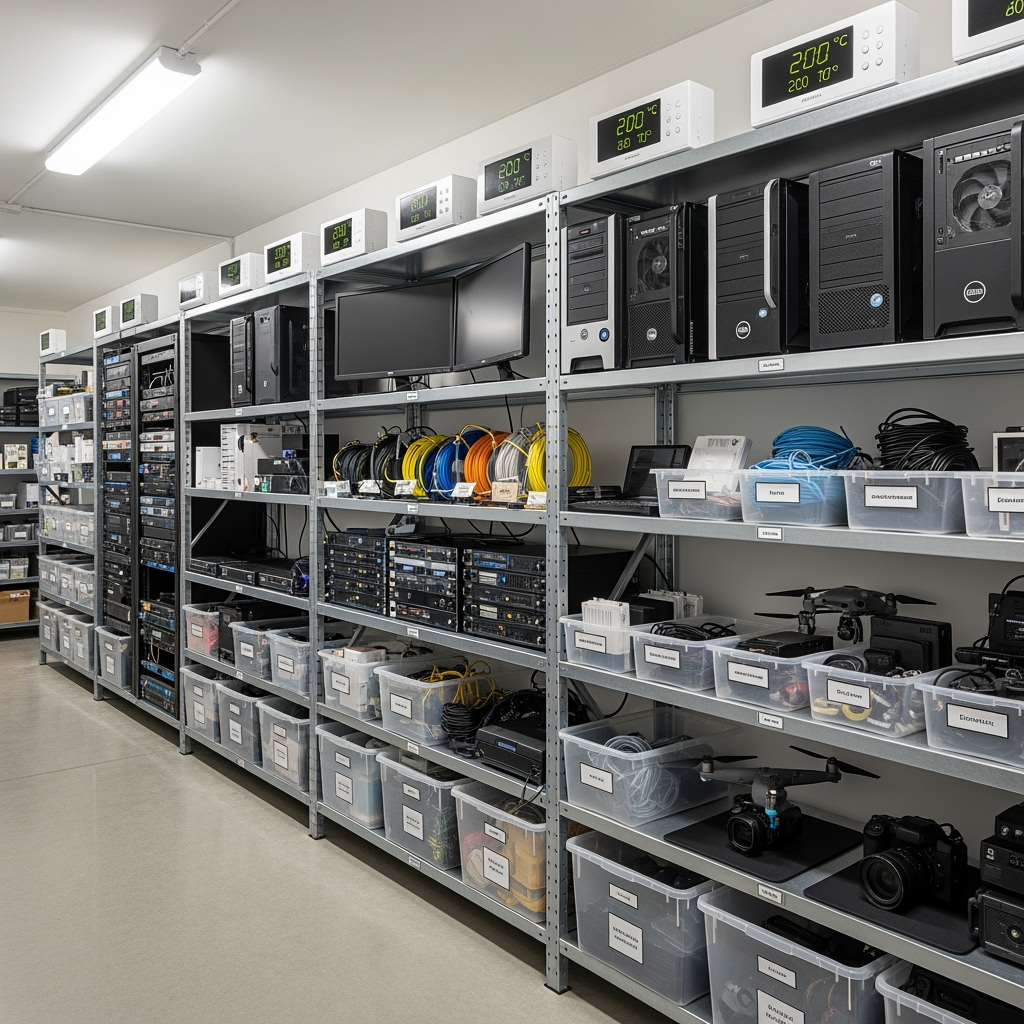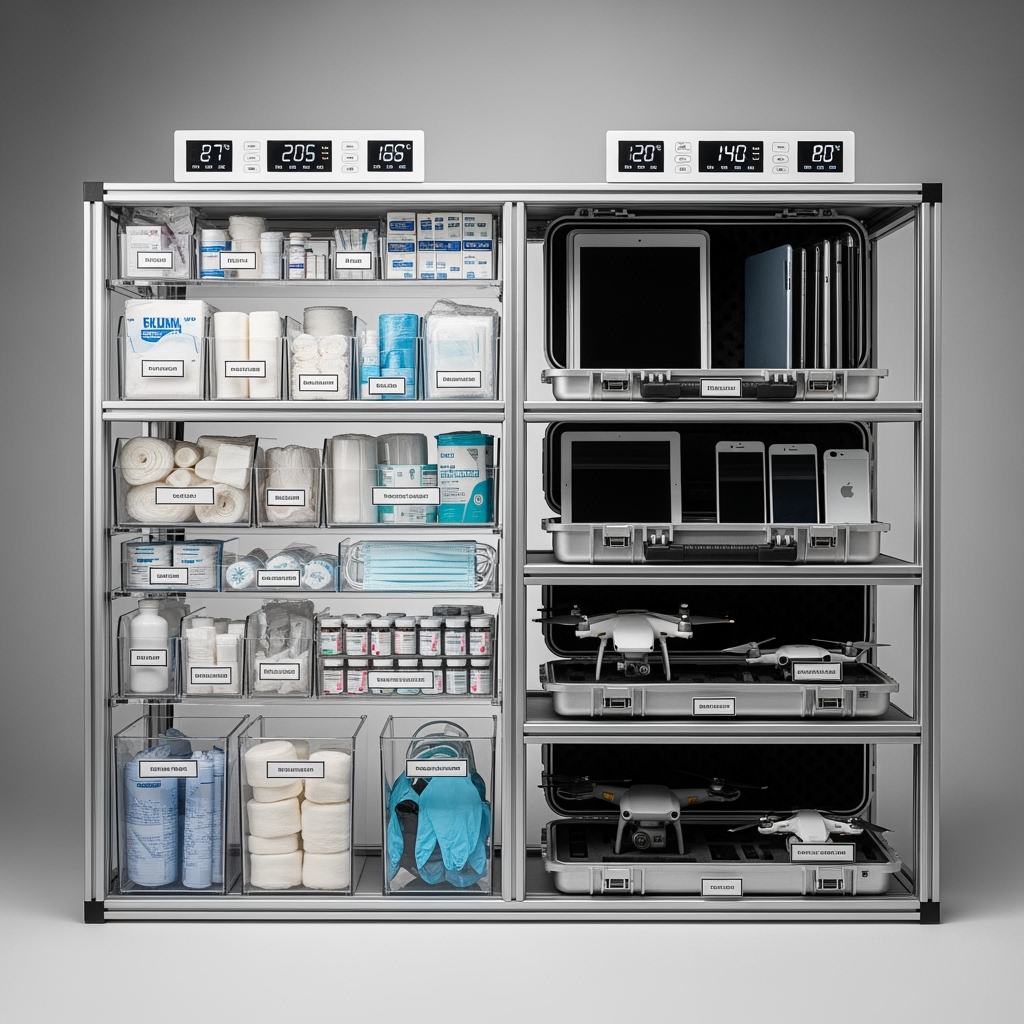<h2>Introduction: Why Weather Protection Matters for Your Business</h2>
<p>For small business owners, protecting inventory from extreme weather isn’t just about safeguarding assets—it’s about ensuring business continuity and protecting your investment. Whether you’re facing hurricanes, floods, or severe storms, having a comprehensive storage strategy can mean the difference between minor disruption and major loss.</p>
<h2>Understanding Weather-Related Risks to Your Inventory</h2>
<p>Different types of extreme weather can pose unique threats to your business inventory:</p>
<ul>
<li>Humidity and moisture damage</li>
<li>Temperature fluctuations</li>
<li>Water damage from flooding</li>
<li>Wind and debris damage</li>
<li>Power outage effects on temperature-sensitive items</li>
</ul>
<h2>Climate-Controlled Storage: Your First Line of Defense</h2>
<p>Climate-controlled storage units offer essential protection for your business inventory. These specialized units maintain consistent temperature and humidity levels, protecting sensitive items from extreme weather conditions. Key benefits include:</p>
<ul>
<li>Consistent temperature regulation</li>
<li>Humidity control</li>
<li>Protection from extreme temperature swings</li>
<li>Better air quality</li>
</ul>
<h2>Strategic Storage Solutions for Different Inventory Types</h2>
<p>Different products require different storage approaches. Here’s how to protect various inventory types:</p>
<h3>Electronics and Tech Equipment</h3>
<ul>
<li>Use climate-controlled units</li>
<li>Keep away from ground level</li>
<li>Use moisture-absorbing materials</li>
<li>Implement proper insulation</li>
</ul>
<h3>Textiles and Clothing</h3>
<ul>
<li>Control humidity levels</li>
<li>Use protective covers</li>
<li>Implement proper ventilation</li>
<li>Regular inspection schedules</li>
</ul>
<h2>Emergency Preparedness: Creating Your Weather Response Plan</h2>
<p>A comprehensive emergency plan should include:</p>
<ul>
<li>Inventory documentation and tracking</li>
<li>Emergency contact information</li>
<li>Evacuation procedures</li>
<li>Backup power solutions</li>
<li>Insurance coverage details</li>
</ul>
<h2>Best Practices for Long-Term Weather Protection</h2>
<p>Implement these strategies for ongoing inventory protection:</p>
<ul>
<li>Regular storage unit maintenance</li>
<li>Seasonal inventory rotation</li>
<li>Updated emergency procedures</li>
<li>Staff training on weather protocols</li>
</ul>
<h2>Technology and Monitoring Solutions</h2>
<p>Leverage technology to protect your inventory:</p>
<ul>
<li>Temperature monitoring systems</li>
<li>Humidity sensors</li>
<li>Security cameras</li>
<li>Weather alert systems</li>
</ul>
<h2>Insurance and Documentation</h2>
<p>Protect your business financially with:</p>
<ul>
<li>Comprehensive insurance coverage</li>
<li>Regular inventory documentation</li>
<li>Photo and video evidence</li>
<li>Detailed value assessments</li>
</ul>
<h2>Conclusion: Building Weather Resilience for Your Business</h2>
<p>Protecting your business inventory from extreme weather requires planning, proper storage solutions, and ongoing vigilance. By implementing these strategies and utilizing climate-controlled storage, you can safeguard your investment and ensure business continuity through any weather event.</p>










Leave a Reply